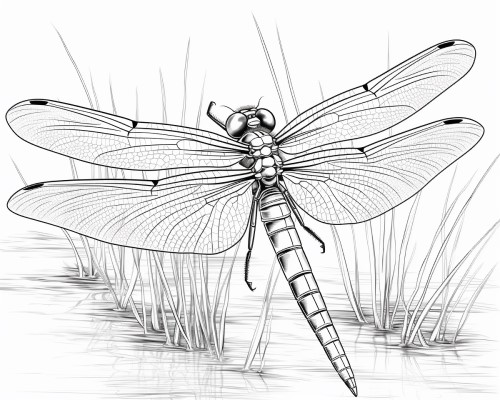Printable Coloring Pages
Ice Age Animals Coloring Pages
Embark on a journey through time with our Ice Age Animals Coloring Pages section, where you can bring the ancient world to life and add your creative touch to illustrations of mammoths, saber-toothed cats, and other fascinating creatures that once roamed the icy landscapes of Earth.
Bison priscus, commonly known as the steppe bison, was a formidable and large herbivore that roamed the grasslands of Eurasia and North America during the Pleistocene epoch, featuring distinctive long horns and a robust build.
Castoroides, often referred to as the giant beaver, was an immense prehistoric rodent that inhabited North America during the Pleistocene epoch, distinguished by its colossal size and impressive, chisel-like incisors.
Elasmotherium, also known as the Siberian unicorn, was a massive rhinoceros with a single, long horn that inhabited the grasslands of Eurasia during the Pleistocene epoch, representing one of the largest known rhinoceros species in history.
Mastodon, a colossal prehistoric relative of elephants, thrived during the Pleistocene epoch in North and Central America. Distinguished by their massive size, unique curling tusks, and teeth adapted for browsing on twigs and branches, mastodons differed from woolly mammoths primarily in their smaller size and teeth structure.
Meganeura, an ancient insect that existed during the Carboniferous period, was a giant dragonfly-like creature with an impressive wingspan. These prehistoric insects, often referred to as "griffinflies," had wingspans that could reach up to 2.5 feet (75 centimeters) or even more. Meganeura is notably different from contemporary dragonflies due to its enormous size, likely facilitated by the higher oxygen levels during the Carboniferous period.
The Pleistocene horse, Equus ferus, was a smaller, wild horse species adapted to the challenging environments of the Ice Age with a robust build and thick coat.
Procoptodon, a prehistoric marsupial, was a giant short-faced kangaroo that inhabited Australia during the Pleistocene epoch, boasting impressive size, large single toe, powerful hind limbs, and a unique upright posture.
About the Ice Age

The Ice Age, a remarkable epoch in Earth's history, casts a chilling and intriguing spell on the imagination, transporting us back to a time when colossal glaciers shaped the landscape and an array of now-extinct megafauna roamed vast icy terrains. Spanning from approximately 2.6 million years ago to 11,700 years ago, the Ice Age, also known as the Pleistocene epoch, was marked by the cyclical advance and retreat of massive ice sheets. This era of climatic extremes saw the expansion of glaciers, resulting in a lower global temperature and the formation of polar ice caps.
One of the most iconic features of the Ice Age was the vast ice sheets that blanketed significant portions of North America, Europe, and Asia. These glaciers, miles thick, carved out the distinctive landforms we see today, including fjords, valleys, and moraines. As the glaciers advanced and retreated, they left an indelible mark on the Earth's geography.
The Ice Age also hosted a diverse cast of megafauna, some of the most awe-inspiring creatures to have ever lived. The woolly mammoth, with its long, shaggy fur and impressive tusks, traversed the icy tundra, while the saber-toothed cat, equipped with formidable fangs, roamed the landscapes in pursuit of prey. Giant ground sloths, mastodons, and massive cave bears also added to the incredible biodiversity of this frozen world.
As the Ice Age waned, giving way to the warmer Holocene epoch, many of these magnificent creatures disappeared, leaving behind fossils and glimpses into a bygone era. Today, the study of the Ice Age not only fuels our curiosity about the planet's ancient past but also provides valuable insights into climate dynamics and the interplay between species and their environments. Coloring pages depicting the creatures of the Ice Age serve as windows to a world frozen in time, inviting us to explore and appreciate the wonders of this chilling yet captivating chapter in Earth's history.
 Dire Wolf coloring pages
Dire Wolf coloring pages Homotherium coloring pages
Homotherium coloring pages


 Wooly mammoth coloring pages
Wooly mammoth coloring pages





